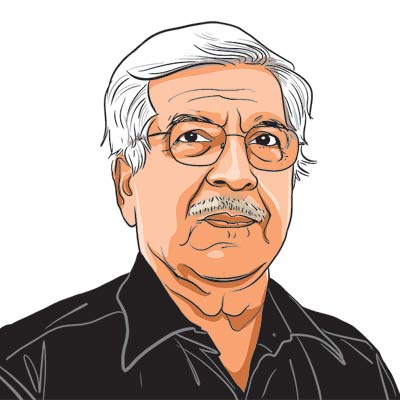Opinion The poor,and the growing
Following norms about nutrition for the poor does not require policy to go overboard. This point has been echoed by the Tendulkar Committees...
Following norms about nutrition for the poor does not require policy to go overboard. This point has been echoed by the Tendulkar Committees recent report,in superb,terse sections based on R. Radhakrishnas presidential address to the Indian Econometric Society in 2008. In the report,the relation between income growth,the diversification of food intake away from cereals,between calories and food demand is handled in an extremely competent manner and in fact an intake of 1700 calories justified.
That was where the Saxena Committee,supposed to define concepts for the next below poverty line census,goes overboard and comes out with very high numbers. Food security can be achieved at much lower costs than Saxena suggests. But he scores in his emphasis on access to social facilities and educational opportunities,for which he suggests a system of deprivation points based on many indicators,including caste,asset positions,educational achievements and so on.
Such points,and weights to different sections of the population in defining poverty,we actually have limited experience in developing. For example,when I was VC of JNU,there was an extensive debate on a workable system of deprivation points,as part of an admissions reform. (Participants included Sukhadeo Thorat,and Messrs Yechury and Karat,both union presidents then). Ultimately a system was designed that awarded points on the basis of the location of the previous college,sex,and BPL status. If you were a girl OBC,graduating from a Bastar college and your dad was BPL,you got nine deprivation points. A non-BPL OBC boy from Delhi got three. In the first year,only five out of a thousand (0.5 per cent) made it on this count. Real social change is gradual.
But this argument becomes blurred when applied to universal social facilities like drinking water,education or health. Saxena in fact recognises that differential entitlement systems will be required for different facilities: a very valid point but an operational nightmare.
I will only note two operational problems of many. While Saxena at least takes the issue of deprivation indicators on directly,they should actually emerge from a goals exercise,which needs national cogitation and relationships with instruments and programmes. Finally,there has to be a matching with scarcities not only of available resources,but also of the more basic non-renewable kind as well as delivery capabilities. Otherwise Saxena-style exercises will remain sporadic acts of activism.
This exercise will have to unequivocally define the rights of sections of the population; lay emphasis on the rights of individuals and groups,including participatory forms of decision-making. These are not just questions of resource use,but also of governance. Systems will demand greater fairness and self-restraint in the use of government power.
In the end,the concerns of an emerging 21st century India could not be visualised in the 70s it is futile to paste them onto the tattered poverty line developed then. The experience since 1991 is that reform by stealth fails in substantial measure. The Tendulkar Committeee has made us cross that Rubicon. We must articulate the space of different sections in a definable and contestable manner when designing reform.
My view is that the very poor should be selectively defined and targeted,but the growth process should be built around entitlements. Design of policy should provide incentives for widespread growth and these would include state-determined incentives.
During the OBC debate in Parliament in 1991,it was argued by the then leader of the opposition that the OBCs are the farmers,the herdsmen,the tree growers of India. A broad-based scheme of agricultural and rural growth based on the resource endowments of the regions they live in,with an emphasis on value added and employment would help them more than access to declining government jobs. There was another,more compelling reason. By then,global research had shown that expanding the affirmative action base was not a plus-plus equitable game: the sections just above the poor knew best how to take the benefits away from the poor. It would be good to get back again to a world where the focus for redistribution are the poor and the process of growth focuses on the needy who are not that poor.
The argument now is for a newer scheme of entitlements as compared to that which emerges from a poverty line we recommended in another,vanished,era. Tendulkar correctly implies that with the present policy framework the state should withdraw,therefore the aspirations Saxena emphasises will have to be woven into the entitlements which a growth exercise must ensure. It would be good if the Planning Commission builds on this,and in its mid-term review provides a perspective for the few who must be protected as defined by Radhakrishnas nutritional work and the many who must be empowered as listed by Saxena.
The writer,a former Union minister,is chairman,Institute of Rural Management,Anand
express@expressindia.com





